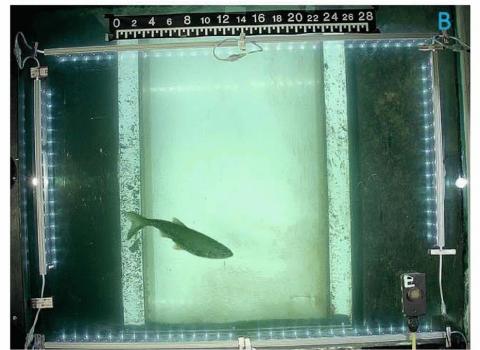Recent studies have shown that reducing the precision of floating‐point calculations in an atmospheric model can improve the model's computational performance without affecting model fidelity, but code changes are needed to accommodate lower precision or to prevent undue round‐off error. For complex...
Filter results
Category
- (-) Computational Research (15)
- (-) Chemical & Biological Signatures Science (4)
- (-) Data Analytics & Machine Learning (3)
- Scientific Discovery (248)
- Biology (153)
- Earth System Science (117)
- Human Health (92)
- Integrative Omics (59)
- Microbiome Science (26)
- National Security (20)
- Computing & Analytics (14)
- Energy Resiliency (9)
- Data Analytics & Machine Learning (7)
- Visual Analytics (6)
- Materials Science (5)
- Atmospheric Science (4)
- Coastal Science (4)
- Renewable Energy (4)
- Weapons of Mass Effect (4)
- Chemistry (3)
- Computational Mathematics & Statistics (3)
- Cybersecurity (2)
- Distribution (2)
- Ecosystem Science (2)
- Electric Grid Modernization (2)
- Energy Efficiency (2)
- Energy Storage (2)
- Grid Cybersecurity (2)
- Plant Science (2)
- Solar Energy (2)
- Bioenergy Technologies (1)
- Computational Mathematics & Statistics (1)
- Grid Analytics (1)
- High-Performance Computing (1)
- Subsurface Science (1)
- Terrestrial Aquatics (1)
- Transportation (1)
- Wind Energy (1)
Project Type
Publication Type
Tags
- Machine Learning (6)
- Type 1 Diabetes (6)
- Autoimmunity (5)
- Biomarkers (4)
- Molecular Profiling (4)
- Predictive Modeling (4)
- Mass spectrometry-based Omics (3)
- Alternative Splicing (2)
- Proteomics (2)
- Data inventory (1)
- DNA Sequence Analysis (1)
- Droughts (1)
- EBC (1)
- Exhaled Breath Condensate (1)
- Extreme weather (1)
- Fires (1)
- Fish Detection (1)
- Functional Annotation Analysis (1)
- High-Performance Computing (1)
- Hydropower (1)
- Kmers (1)
- Marine and Hydrokinetic (1)
- Omics (1)
- Python (1)
- Quantification (1)
- RNA Sequence Analysis (1)
- Snakemake (1)
- Software Data Analysis (1)
- TMT (1)
- underwater video (1)
Category
Exhaled breath condensate proteomics represent a low-cost, non-invasive alternative for examining upper respiratory health. EBC has previously been used for the discovery and validation of detected exhaled volatiles and non-volatile biomarkers of disease related to upper respiratory system distress...
Christine H Chang, William C Nelson, Abby Jerger, Aaron T Wright, Robert G Egbert, Jason E McDermott, Snekmer: a scalable pipeline for protein sequence fingerprinting based on amino acid recoding, Bioinformatics Advances , Volume 3, Issue 1, 2023, vbad005, https://doi.org/10.1093/bioadv/vbad005...
HDF5 file containing 10,000 hydraulic transmissivity inputs and the corresponding hydraulic pressure field outputs for a two-dimensional saturated flow model of the Hanford Site. The inputs are generated by sampling a 1,000-dimensional Kosambi-Karhunen-Loève (KKL) model of the transmissivity field...
The Human Islet Research Network (HIRN) is a large consortia with many research projects focused on understanding how beta cells are lost in type 1 diabetics (T1D) with a goal of finding how to protect against or replace the loss of functional beta cells. The consortia has multiple branches of...
Datasets
0
This project is an interdisciplinary collaboration supported by US DOE Office of Science's Scientific Discovery through Advanced Computing (SciDAC) program. The project addresses a crucial but largely overlooked source of error in the Energy Exascale Earth System Model (E3SM) and other atmosphere...
Category
Datasets
2
Category
Datasets
1
Datasets
1
The Environmental Determinants of Diabetes in the Young (TEDDY) study is searching for factors influencing the development of type 1 diabetes (T1D) in children. Research has shown that there are certain genes that correlate to higher risk of developing T1D, but not all children with these genes...
Datasets
1
The Diabetes Autoimmunity Study in the Young (DAISY) seeks to find environmental factors that can trigger the development of type 1 diabetes (T1D) in children. DAISY follows children with high-risk of developing T1D based on family history or genetic markers. Genes, diets, infections, and...
Datasets
1
Machine learning is a core technology that is rapidly advancing within type 1 diabetes (T1D) research. Our Human Islet Research Network (HIRN) grant is studying early cellular response initiating β cell stress in T1D through the generation of heterogenous low- and high-throughput molecular...
Datasets
3
Category
Biomedical Resilience & Readiness in Adverse Operating Environments (BRAVE) Project: Exhaled Breath Condensate (EBC) TMT Proteomic Transformation Data Exhaled breath condensate (EBC) represents a low-cost and non-invasive means of examining respiratory health. EBC has been used to discover and...
ProxyTSPRD profiles are collected using NVIDIA Nsight Systems version 2020.3.2.6-87e152c and capture computational patterns from training deep learning-based time-series proxy-applications on four different levels: models (Long short-term Memory and Convolutional Neural Network), DL frameworks...









